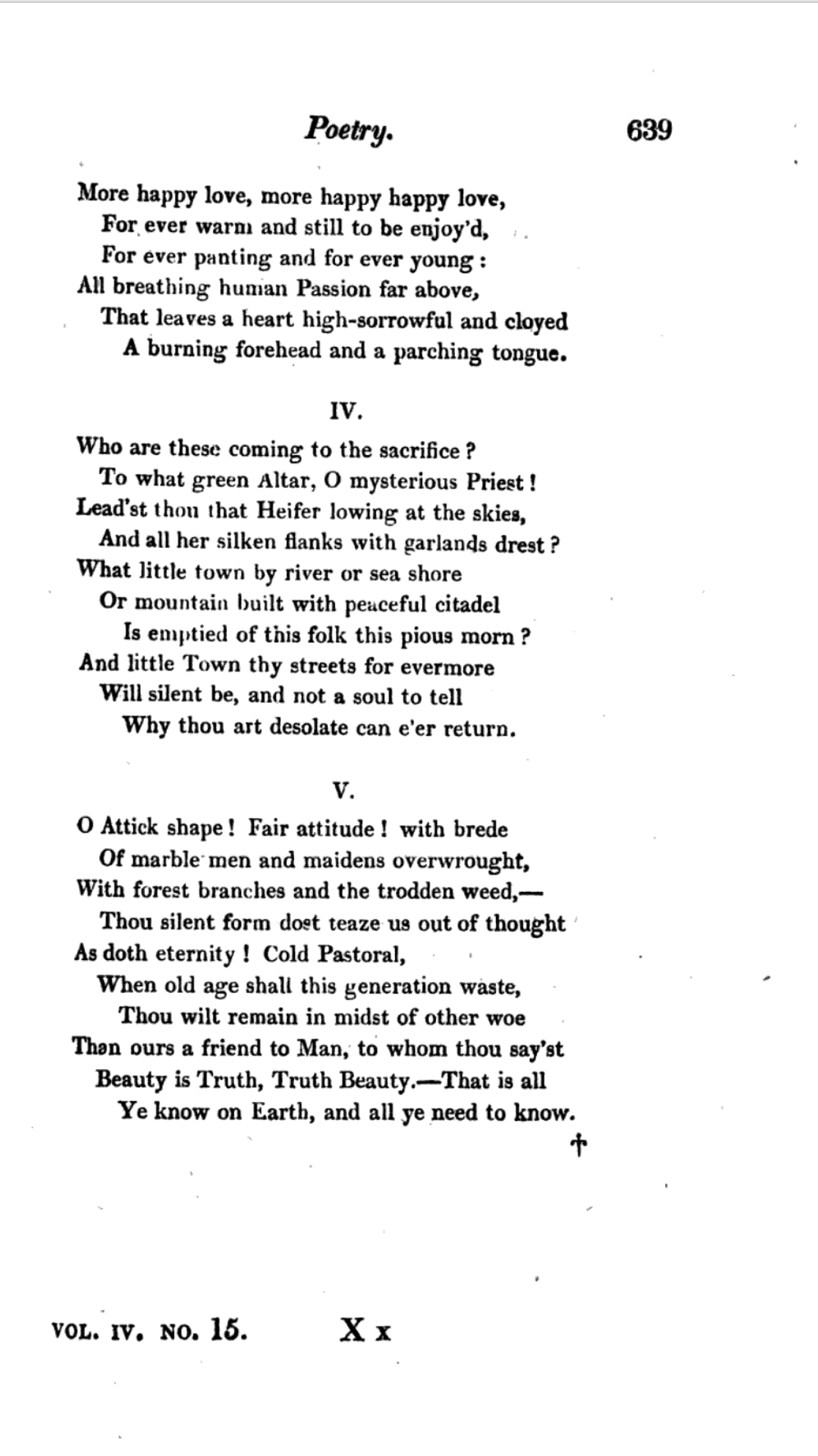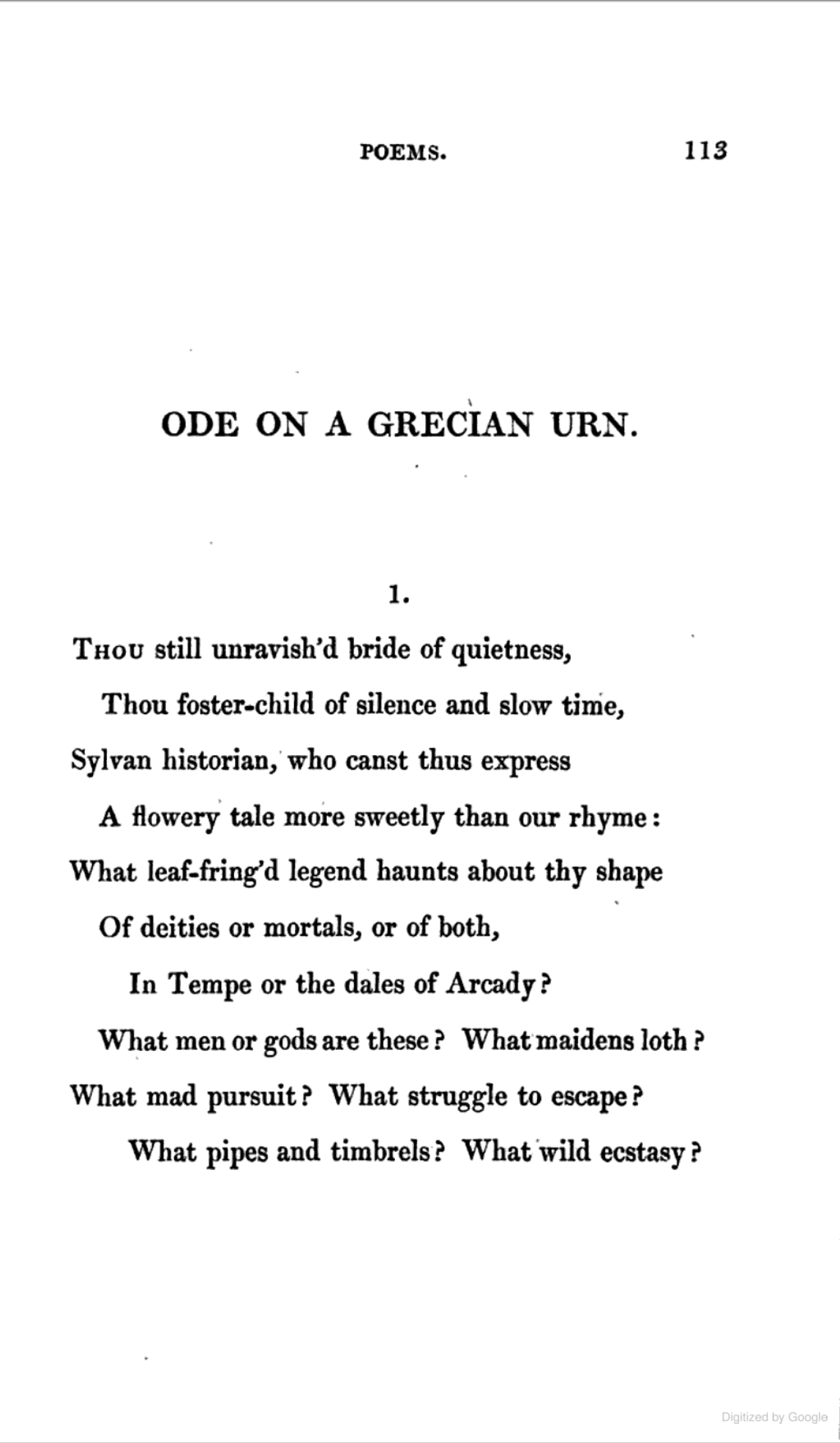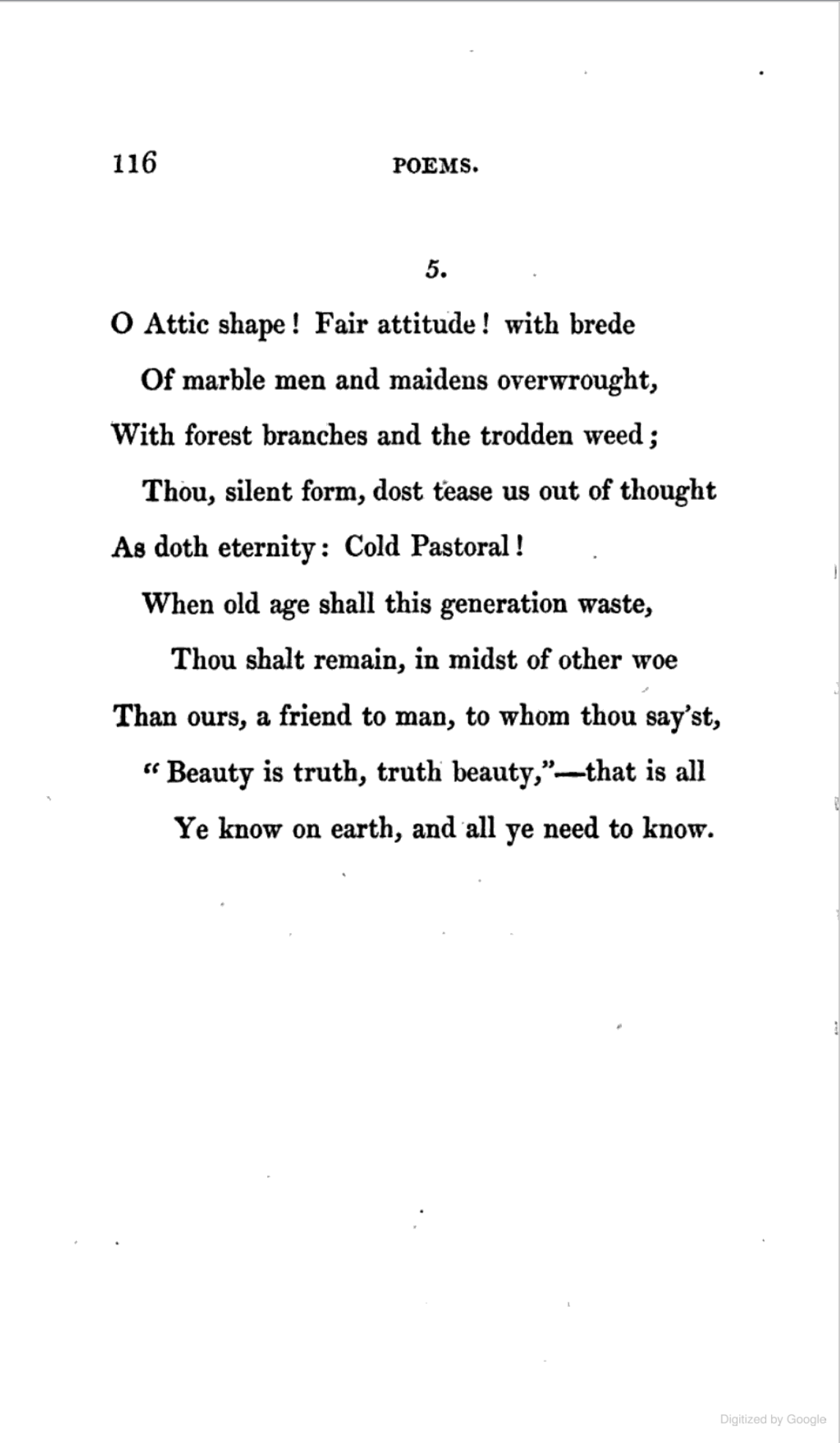"Ode on a Grecian Urn"
By
John Keats
Transcription, correction, editorial commentary, and markup by Students and Staff of the University of Virginia
BeautyThis closing couplet is a famous example of a situation where an important part of a poem exists in two different versions, versions that can lead to very different interpretations. In the version of "Ode on a Grecian Urn" that was published Lamia, Isabella, The Eve of St. Agnes and other Poems, which is the version that we include in our anthology, Keats puts the phrase "Beauty is truth, truth beauty" in quotation marks, which makes it seem as though the speaker of the line might be the urn itself. But in the version that he published in the journal  Annals of the Fine Arts in 1819 (depicted here), Keats did not, which makes it seem as if the speaker is the voice of the poet himself. Neither version is better or more authentic than the other; Keats never explained the why he added the quotation marks in 1820. But how we think about the poem can be quite different depending on which version of this closing couplet we are reading.
Annals of the Fine Arts in 1819 (depicted here), Keats did not, which makes it seem as if the speaker is the voice of the poet himself. Neither version is better or more authentic than the other; Keats never explained the why he added the quotation marks in 1820. But how we think about the poem can be quite different depending on which version of this closing couplet we are reading.
 Annals of the Fine Arts in 1819 (depicted here), Keats did not, which makes it seem as if the speaker is the voice of the poet himself. Neither version is better or more authentic than the other; Keats never explained the why he added the quotation marks in 1820. But how we think about the poem can be quite different depending on which version of this closing couplet we are reading.
Annals of the Fine Arts in 1819 (depicted here), Keats did not, which makes it seem as if the speaker is the voice of the poet himself. Neither version is better or more authentic than the other; Keats never explained the why he added the quotation marks in 1820. But how we think about the poem can be quite different depending on which version of this closing couplet we are reading.113
Ode on a Grecian Urn
1.
1Thou still unravish'd bride of quietness,
2Thou foster-child of silence and slow time,
3Sylvan historian, who canst thus express
4A flowery tale more sweetly than our rhyme:
5What leaf-fring'd legend haunts about thy shape
6Of deities or mortals, or of both,
7In Tempe or the dales of Arcady?
8What men or gods are these? What maidens loth?
9What mad pursuit? What struggle to escape?
10What pipes and timbrels? What wild ecstasy?



